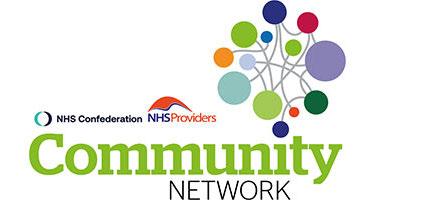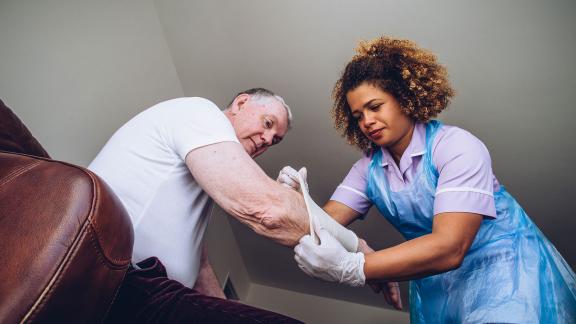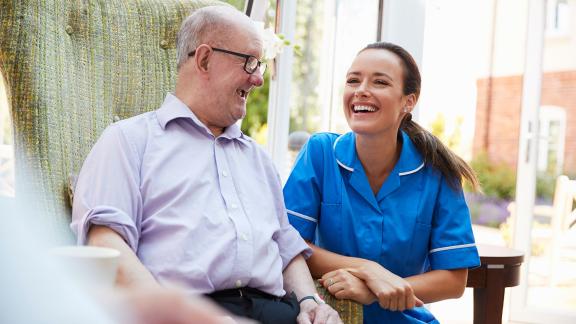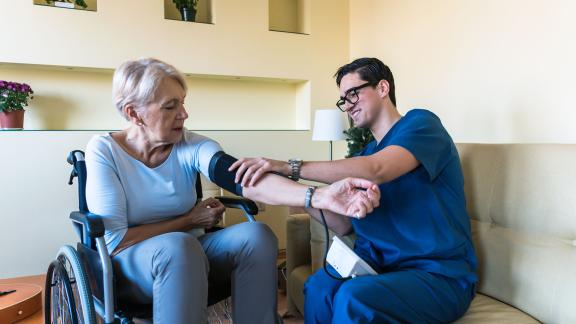Operation Pendant in North East Essex

The East Suffolk and North Essex NHS Foundation Trust has been working collaboratively with several system partners to tackle a disjointed approach to taking pendant alarm calls, and to provide a streamlined and unified system to pass calls on to the most appropriate service.
The case study is produced by the Community Network, which is hosted by the NHS Confederation and NHS Providers.
Key benefits and outcomes
- Shorter waiting times for people when they have had a fall.
- Fewer call-outs to the ambulance service, creating extra capacity in the system.
- Increase benefit of falls prevention measures.
About the service
Operation Pendant provides an alternative referral route for the ambulance service to redirect 999 calls for non-injured fallers in the community. The service delivers across all of North East Essex split between the Colchester Helpline and Tendring Careline and aims to reduce 999 responses, reduce conveyances and improve waiting times for non-injured fallers. Patients are offered a pendant alarm by the providers which is means tested at a cost to the patient.
When faced with the challenge of creating a more responsive service for people who have had falls, a range of organisations in North East Essex came together for Operation Pendant to set up a clear pathway that enabled people without injury to be seen quickly and to get the services they need to help prevent future falls.
What the system faced
Operation Pendant has been live in North East Essex for five years but was only accessed via clinical triage in the ambulance service. This meant that local providers would still have to follow the 999 pathway to access Operation Pendant for a non-injury faller.
This disconnected approach meant that if the call was made to the community team, therapists would arrive and then have to call for an ambulance if patients were on the floor and unable to get up, even if they were not injured.
This resulted in delays for patients and unnecessary call-outs to an ambulance service already working flat out.
What the system did
The UCR team at East Suffolk and North Essex NHS Foundation Trust raised concerns to their then-CCG in July 2021. The team was told about a contract variation that could be put in place for an agreement between East of England Ambulance Service NHS Trust and the careline service locally, called Operation Pendant. This would enable a direct referral from the UCR and Singlepoint End of Life Nurses as the clinical triage had already been completed by the clinician.
The community service was added in to the contract, as well as the St Helena Hospice end of life nursing team, and they discussed the scope of the contract with the careline provider in order to ensure the correct people were referred. The agreement was also made to ensure a two-way arrangement so that the careline services’ regular callers could be referred to UCR teams and benefit from NHS assistance, such as occupational therapy (OT) or physiotherapy services.
Since the testing phase, team members have become confident using the new system and have had positive experiences.
Now, when a person has a fall they may press their pendant if they have one, call an ambulance, or access the community services team via a single point of access. If the calls go to Operation Pendant, they are able to refer into the 999 or into UCR or Singlepoint. If the patient calls 999, they can get triaged for Pendant or UCR. Whoever patients ring they get the same level of service.
They may be unhurt but unable to get up, in which case a member of the careline team will attend to help them up, often within 30 to 40 minutes. Within two hours of their referral, a member of the East Suffolk and North Essex NHS Foundation Trust UCR team can attend to provide any physiotherapy/OT input and to give advice or prevention measures. This includes a partnership with a local voluntary service for a slipper exchange so that people can have their slippers upgraded to avoid them being the cause of multiple falls.
Overcoming obstacles
A key challenge is achieving fast response times as waiting times for clinical triage in 999 is lengthy.
In particular, staff are concerned about 999 calls in the early hours that may not be dealt with until 8am the next morning when UCR services become available.
The organisations are working together towards an automated system to take patients directly from the ambulance stack to help tackle handover delays.
Results and benefits
- improved pick-up times, with people getting assistance faster after a fall
- reduced ambulance call outs, with ambulances saved from going out to people who don’t have injuries.
- increased preventative measures, such as supporting people experiencing multiple falls through physiotherapist or OT input, exercises, mobility equipment and/or footwear advice.
Further information
For more information on this case study, please contact the East Suffolk and North Essex UCR team at esneft.ucrs@nhs.net




